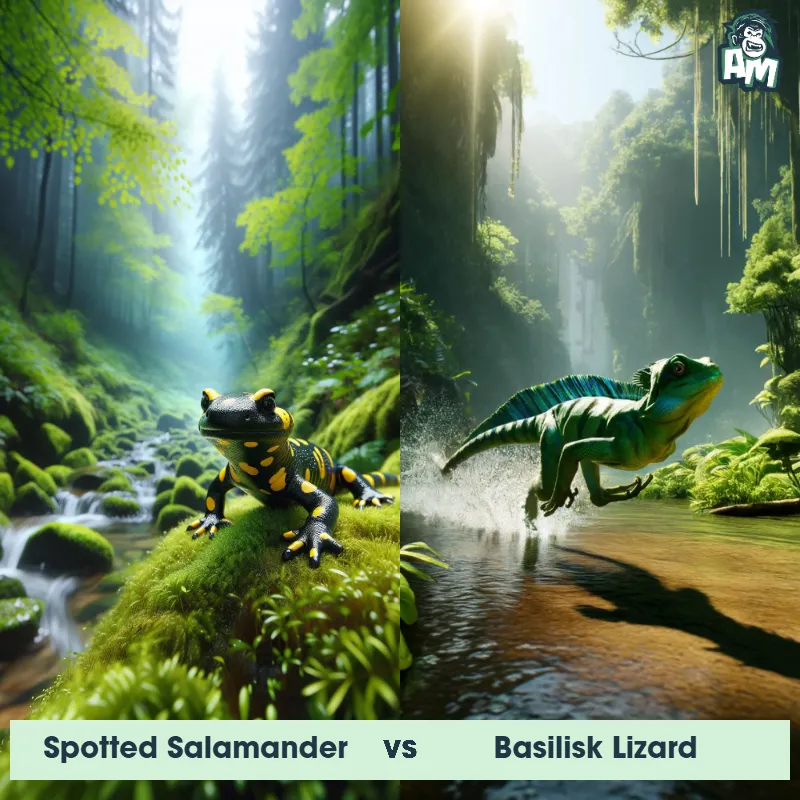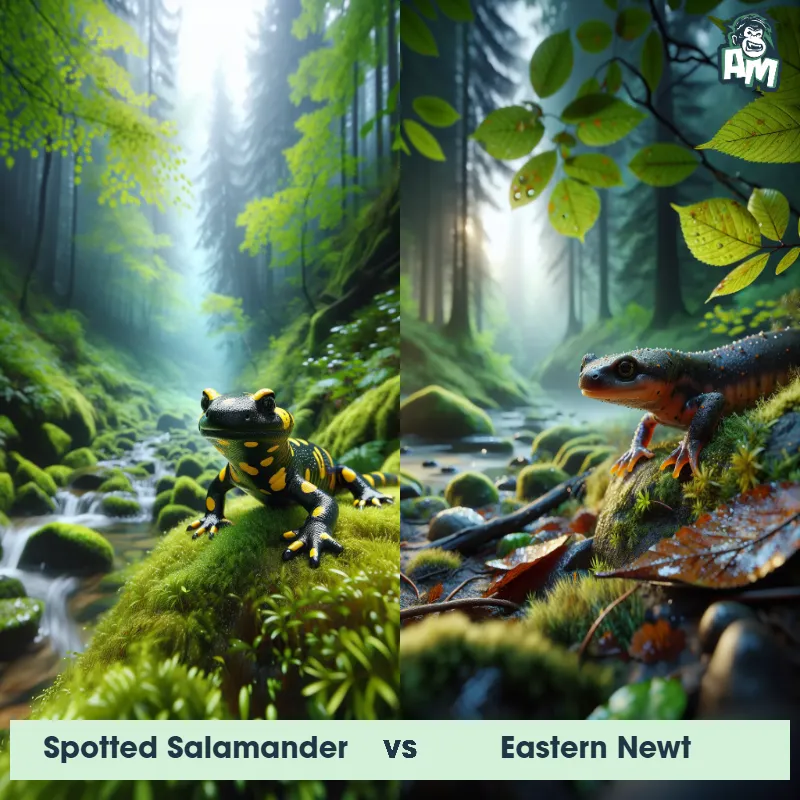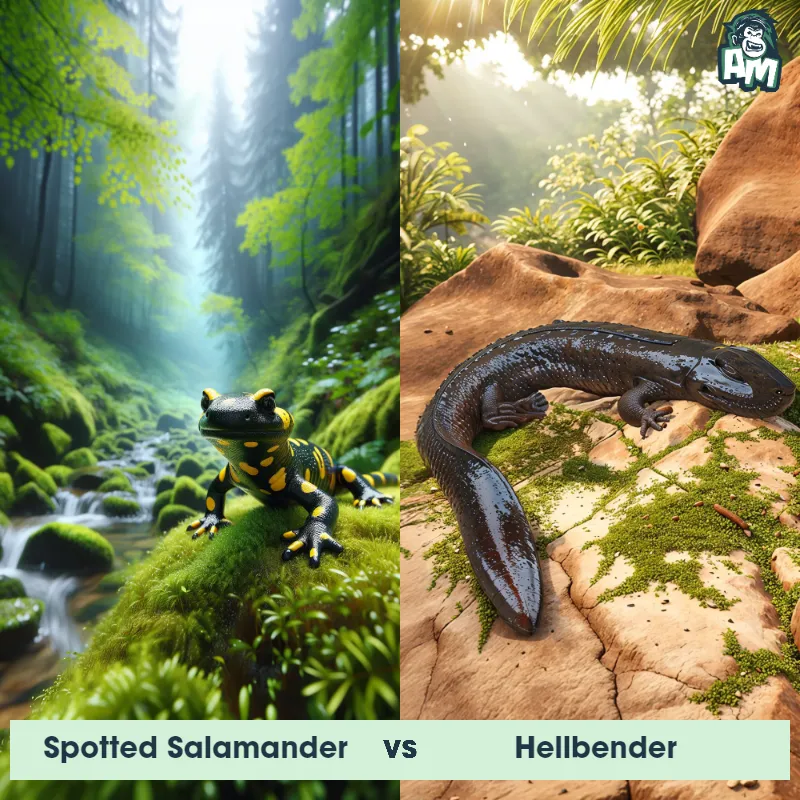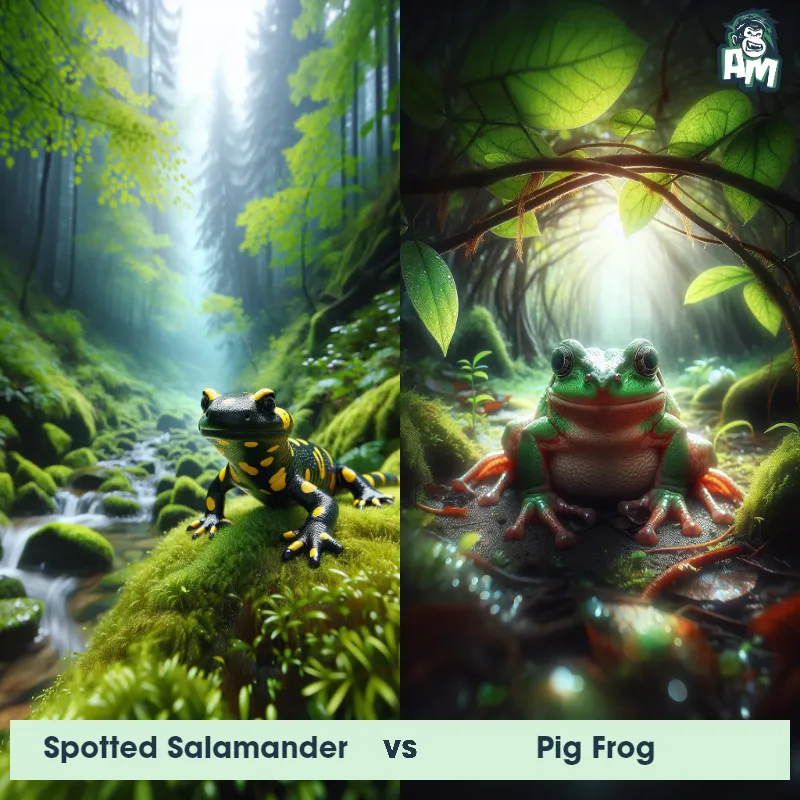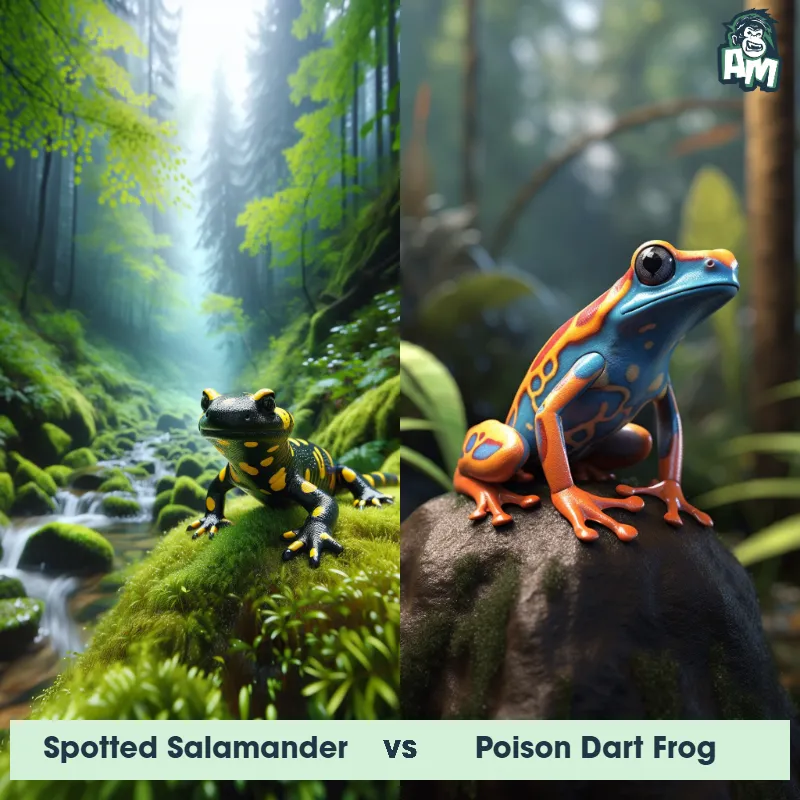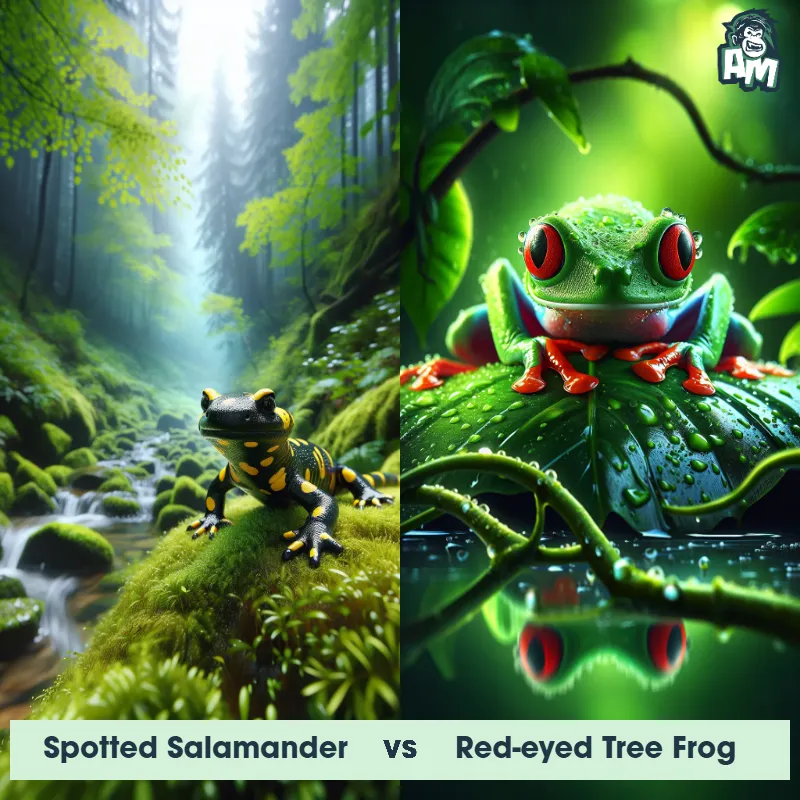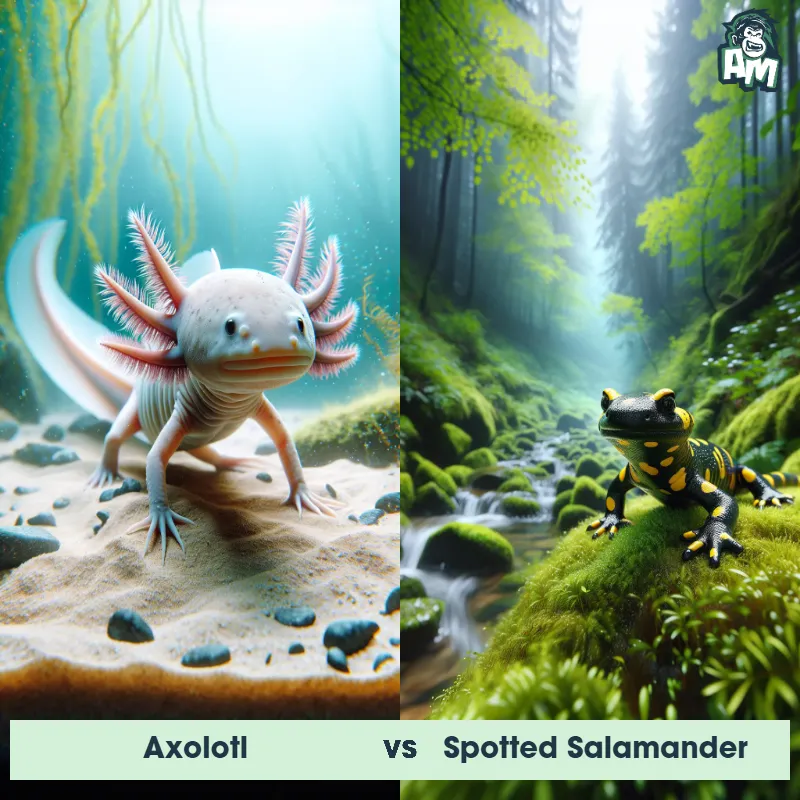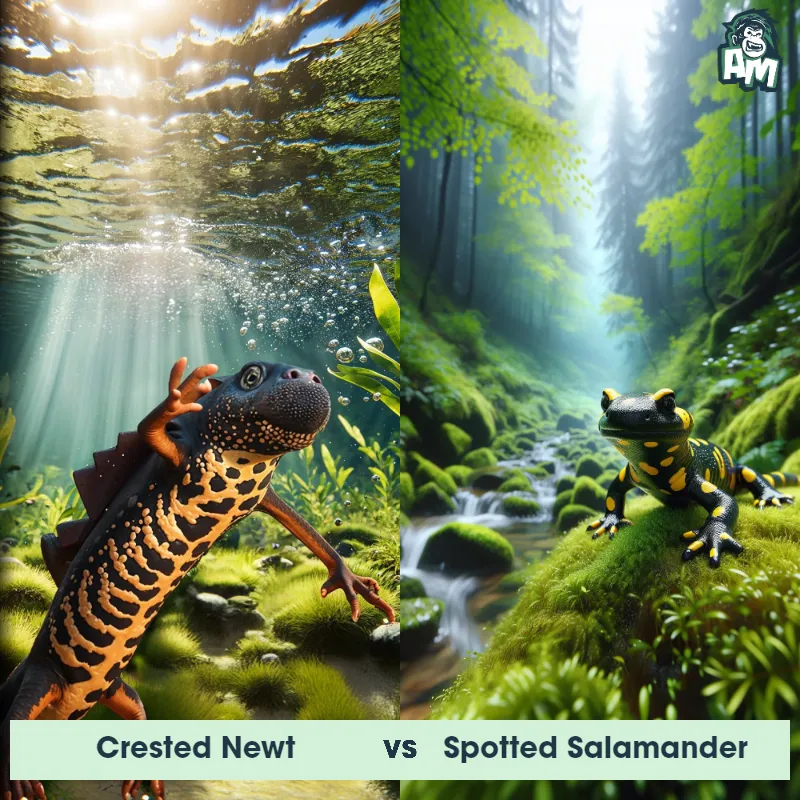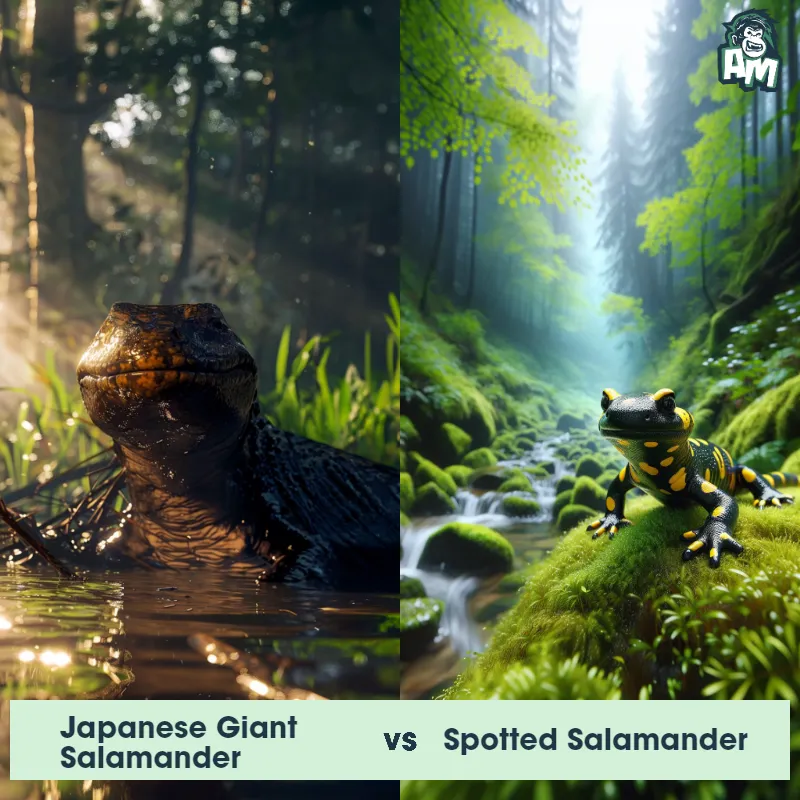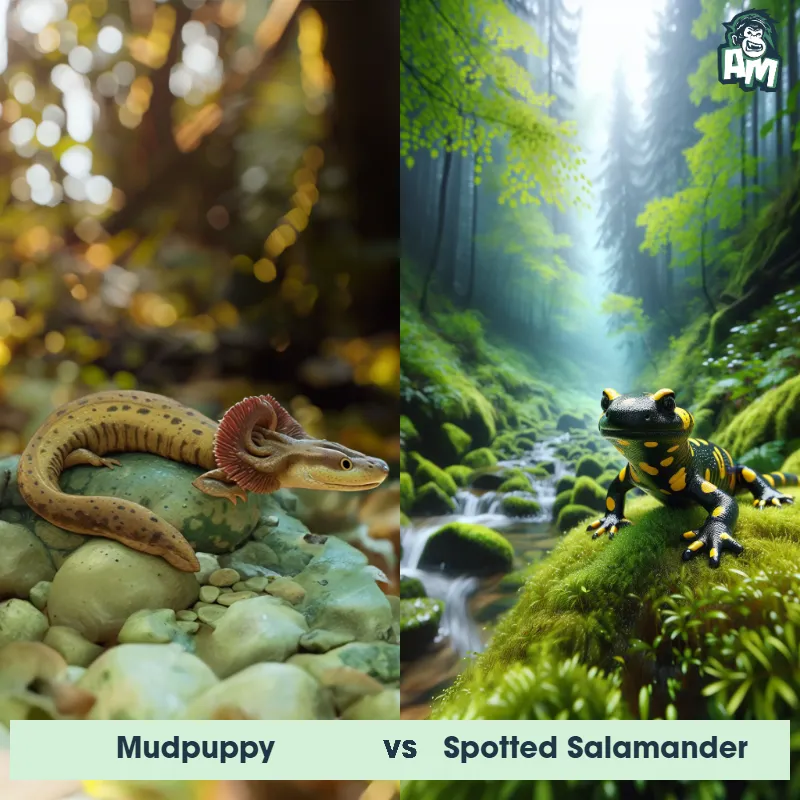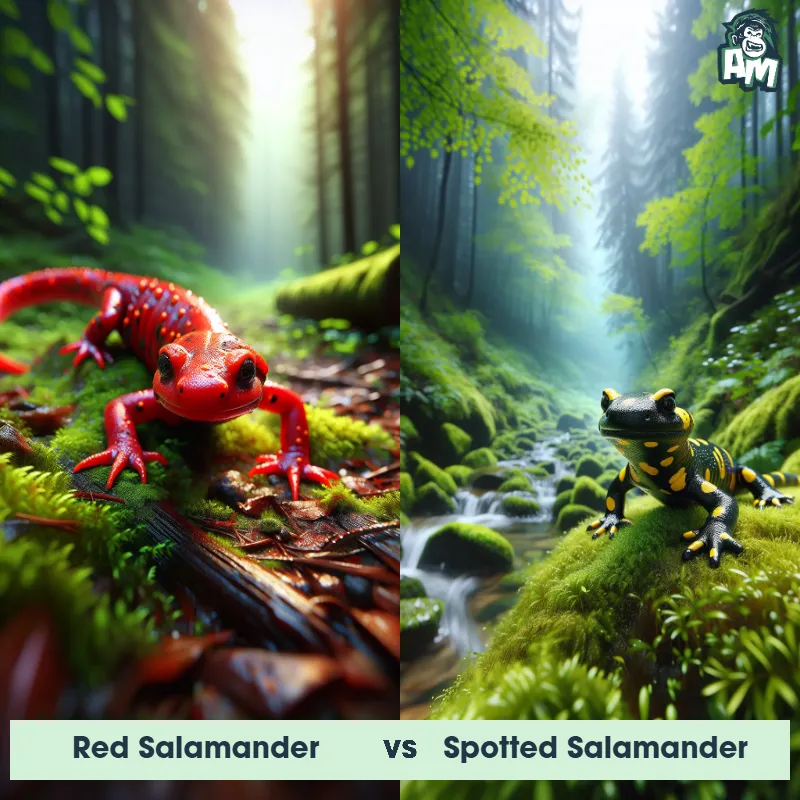The Spotted Salamander
The Spotted Salamander, also known as Ambystoma maculatum, is a medium-sized amphibian with distinct yellow spots on its sleek black or dark brown body. These salamanders have a wide, flat head, a broad snout, and a long tail. They can grow up to 9 inches in length and are known for their habit of living in moist forests and breeding in vernal pools.
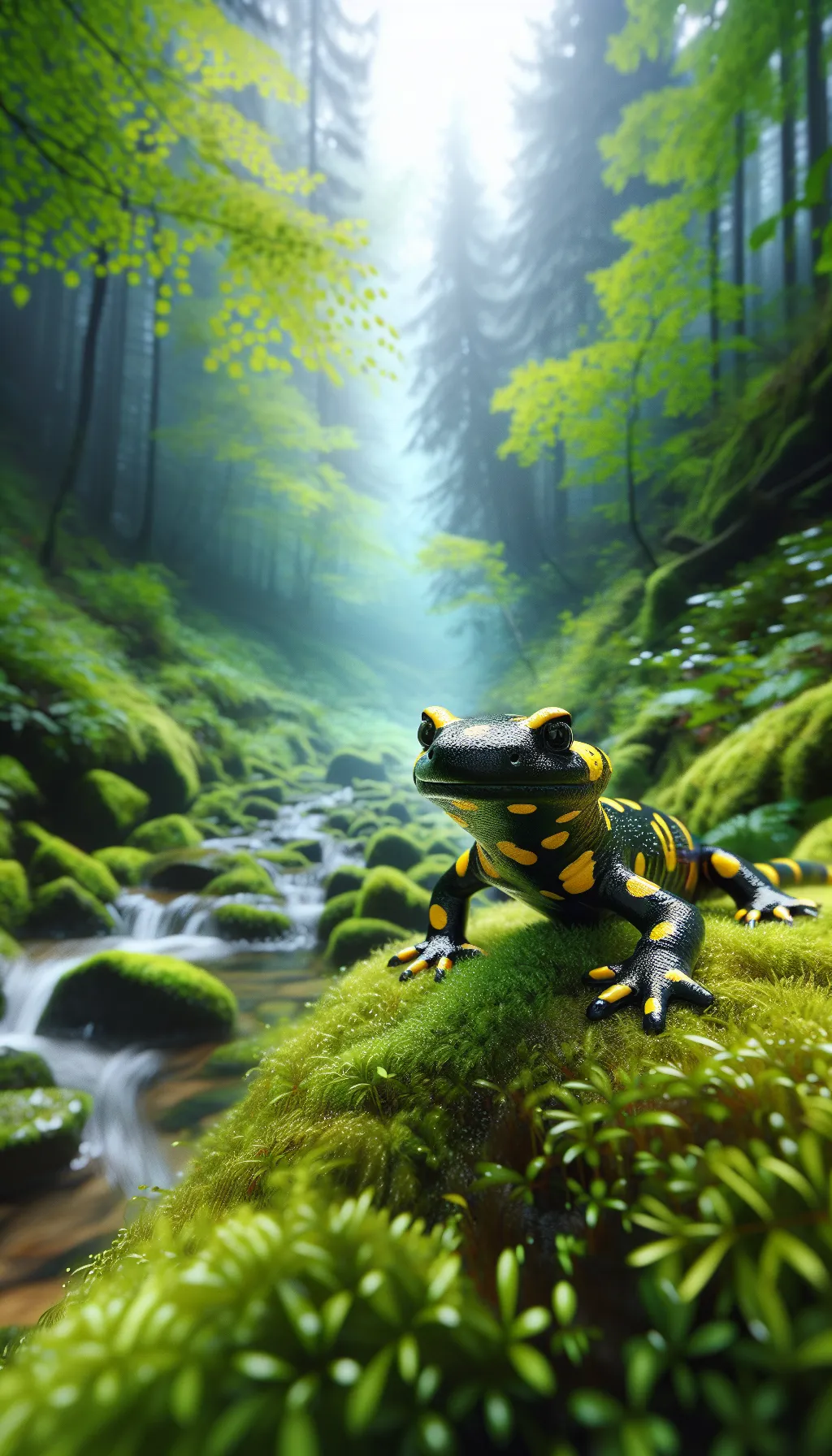
| Spotted Salamander | |
|---|---|
| Size | 6-7 inches (15-18 cm) |
| Weight | 2-4 ounces (57-113 grams) |
| Speed | 4-5 mph (6.4-8 km/h) |
| Key Strength | Poisonous skin glands |
| Biggest Weakness | Slow movement |
| Scientific Name | Ambystoma maculatum |
| Family | Ambystomatidae |
| Habitat | Woodlands, forests, and wetlands |
| Geography | North America |
| Diet | Insects, worms, slugs, and small invertebrates |
| Lifespan | 10 years - 20 years |

The Spotted Salamander
The Spotted Salamander, also known as Ambystoma maculatum, is a medium-sized amphibian with distinct yellow spots on its sleek black or dark brown body. These salamanders have a wide, flat head, a broad snout, and a long tail. They can grow up to 9 inches in length and are known for their habit of living in moist forests and breeding in vernal pools.
Fun Fact: Spotted Salamanders are known to have a unique defense mechanism where they can produce a sticky white substance when threatened, which is used to deter predators by clogging their mouths.
| Spotted Salamander | |
|---|---|
| Size | 6-7 inches (15-18 cm) |
| Weight | 2-4 ounces (57-113 grams) |
| Speed | 4-5 mph (6.4-8 km/h) |
| Key Strength | Poisonous skin glands |
| Biggest Weakness | Slow movement |
| Scientific Name | Ambystoma maculatum |
| Family | Ambystomatidae |
| Habitat | Woodlands, forests, and wetlands |
| Geography | North America |
| Diet | Insects, worms, slugs, and small invertebrates |
| Lifespan | 10 years - 20 years |
Spotted Salamander Matchups
We use AI to simulate matchups between the Spotted Salamander and other animals. Our simulation considers size, strength, and natural predatory behaviors to determine the most likely outcome.

Can't find the Matchup you want?
Create Your Own MatchupSpotted Salamander: Diet, Predators, Aggression, and Defensive Behaviors
What do Spotted Salamanders eat?
Spotted Salamanders are carnivorous and typically feed on a diet of insects, worms, snails, and other small invertebrates. They are also known to consume spiders, small fish, and even other salamanders.
Do Spotted Salamanders have any predators?
Yes, Spotted Salamanders have several predators in the wild, including birds, snakes, raccoons, skunks, and other small mammals. Additionally, larger salamander species, like the Eastern Tiger Salamander, may also prey on the Spotted Salamander.
Are Spotted Salamanders aggressive?
Spotted Salamanders are not known to be aggressive towards humans or other animals. They are generally docile creatures that prefer to avoid conflict and use camouflage as their primary defense mechanism.
Do Spotted Salamanders fight?
Spotted Salamanders do not engage in physical fights with each other or other animals. They rely on their protective coloration and toxic skin secretions to deter predators and avoid confrontation.
How do Spotted Salamanders defend themselves?
Spotted Salamanders defend themselves from predators by secreting a toxic substance from their skin when threatened. This toxic secretion, known as a defensive mechanism, acts as a deterrent to potential predators and can cause irritation or illness if ingested.
What is the biggest weakness of Spotted Salamanders in a fight?
One of the biggest weaknesses of Spotted Salamanders in a fight is their relatively small size and fragility compared to larger predators. Their lack of speed and agility also make them vulnerable to faster-moving predators in a confrontation.
Fun Fact: During the breeding season, Spotted Salamanders migrate en masse on rainy nights to breeding ponds, where they engage in a courtship dance involving elaborate movements to find a mate and reproduce.
Fun Fact: Spotted Salamanders are part of an interesting mutualistic relationship with a type of algae known as Oophila amblystomatis. The algae live inside the salamanders' egg capsules, providing oxygen through photosynthesis while benefiting from the nutrients in the surroundings.



